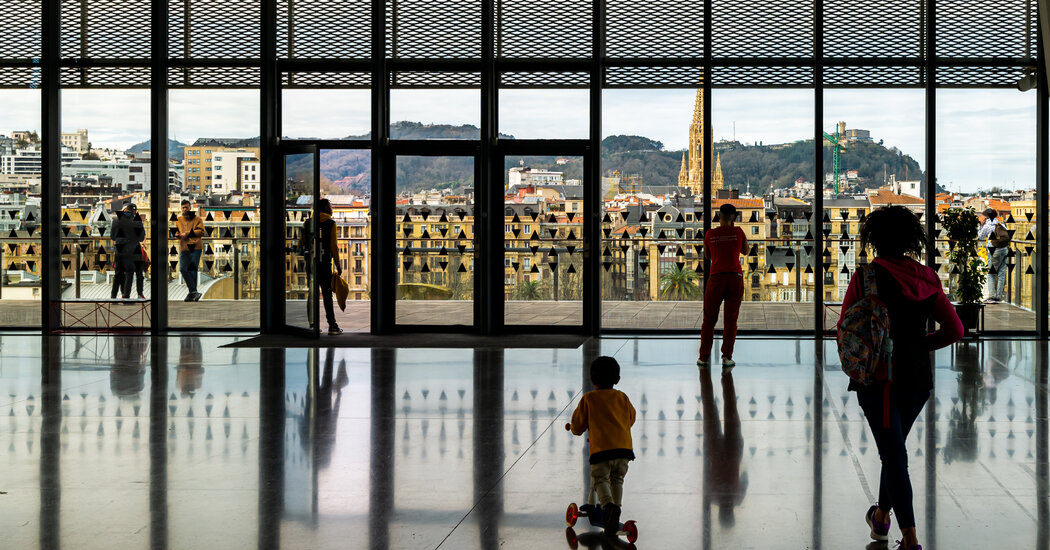It’s not every beach stroll that leads to a modernist masterpiece, let alone one set in the sea amid crashing waves.
After a bracing walk along the esplanade beside Ondarreta Beach in San Sebastián, Spain, I coaxed my family to keep going until we arrived at the western edge of La Concha Bay. There, anchored into the rocks and bashed by waves, was the 20th-century Spanish sculptor Eduardo Chillida’s “El Peine del Viento” (the Comb of the Wind): three nine-ton, rust-covered sculptures. They resembled monumental claws or talons reaching out, trying to connect — a potent symbol of Basque endurance over the centuries.
It was also a sign to my husband and 11-year-old twins, Freddie and Frida, that we’d be spending the weekend seeking out art in some unusual places.
With its wildly vertiginous and verdant landscape and proud heritage, the Basque region has long been a place I’ve wanted to explore with my family. So in February, we spent three crisp, sunny, culture-focused days driving from San Sebastián to Bilbao with several worthwhile stops in between.
By the second day, my kids didn’t want our adventure to end.
San Sebastián
Driving into town earlier that day, past the grandly ornate buildings lining the final stretch of the Urumea River before it reaches the sea, Freddie declared San Sebastián “pretty cool” when he spied groups of kids carrying surfboards and heading toward the beach as they dodged fur-coat-clad shoppers hurrying along the sidewalks. With its world-renowned culinary scene, film festival and stunning natural setting on a crescent-shaped cove, San Sebastián can tick a lot of boxes for visitors with widely varying tastes. Even in February, the beach was buzzing, though only surfers in wet suits and dogs chasing sticks ventured into the water.
The city’s museums were alive with a similar mix of youthful energy and old-school European cultural appreciation. Tabakalera, a giant multipurpose art space inside a former cigarette factory, features exhibitions, film series and huge open-space lounges — some with table tennis and other amusements. It’s a place where kids can be exposed to accessible culture, but still have room to run around. There is also a vast library, a pizzeria and, on the top floor, a restaurant called LABe run by students at the Basque Culinary Center, so it can be a full-day experience.
On a rainy day, Tabakalera could be a lifesaver for a visiting family. But it was sunny during our visit, and the…
Click Here to Read the Full Original Article at NYT > Travel…
